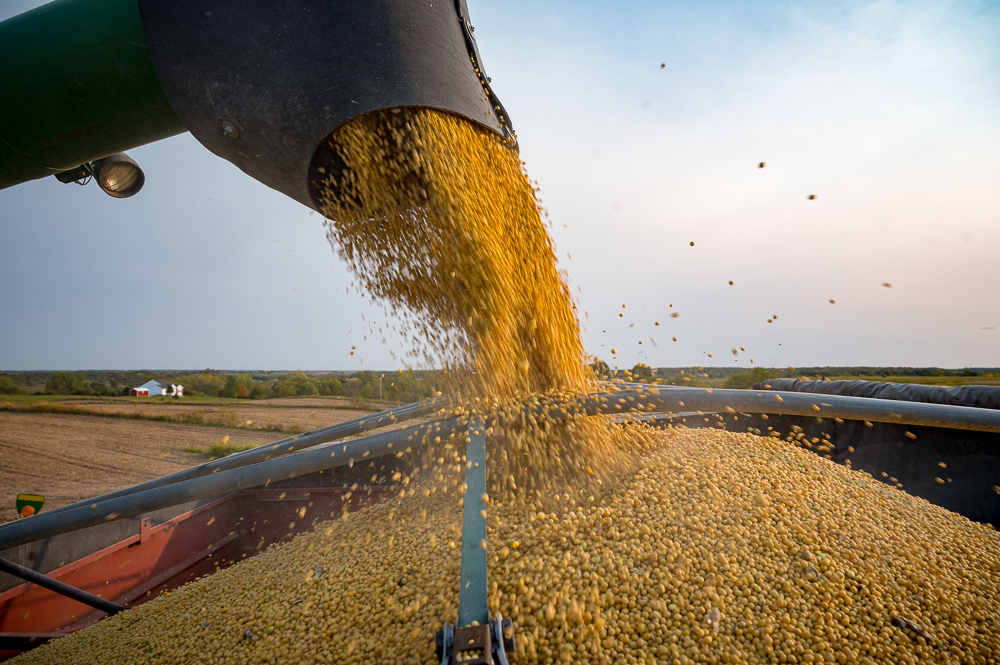
Soybean futures reached the highest prices since July 2016 earlier this week. Good news for soybean farmers marketing their 2020 crop. (Photo: Joseph L. Murphy/Iowa Soybean Association)
Soybean signal: seller’s market
October 29, 2020 | Bethany Baratta
Strong Chinese demand and tighter U.S. soybean supplies due to derecho and drought impacts propped up U.S. soybean futures this week to a price not seen in four years.
Soybean futures reached a session high of $10.89 per bushel on the Chicago Board of Trade earlier this week, the highest price since July 2016.
Matt Campbell, risk management consultant for StoneX in West Des Moines, said recent price supports in the market is a function of supply and demand
“We had about a 3-year period where the market was oversupplied, mostly due to the trade war between China and the United States,” Campbell said. “But I think this is actually a function of supply and demand.”
The U.S. Department of Agriculture (USDA) in its World Agricultural Supply and Demand Estimates (WASDE) report earlier this month pegged 2020/2021 ending stocks at 290 million bushels, well below its September projection of 460 million bushels. Soybean sales to China were off to a record pace early on this marketing year, which began Sept. 1.
In the first five weeks of the soybean marketing year, the United States exported 6.7 million metric tons (246.18 million bushels) of soybeans; 4.5 million metric tons has been sold to China.
That amount is five times what the United States shipped to China through the first five weeks last year, according to Mac Marshall, vice president of market intelligence for the U.S. Soybean Export Council (USSEC) and the United Soybean Board (USB).
Some left to sell
ISA District 9 Director Tom Adam has about 75% of his new-crop priced. He took advantage of higher prices during harvest to price his current crop.
“I’m pleased with the sales we’ve made so far,” Adam said. “I’ve been bullish on getting sales made because prices have been so much higher than the last several years.”
But he hasn’t pulled the trigger on pricing the rest of his crop just yet, in case prices go higher.
Much needed rains in Brazil’s soybean-growing regions pressured U.S. soybean prices lower mid-week. November soybeans closed at $10.57 per bushel on Wednesday, October 28.
But delayed soybean planting in Brazil and continued export demand could support U.S. soybean prices, Adam noted. China typically shifts from buying new-crop soybeans from the United States to buying from Brazil when their harvest is complete. But a change in the weather—as Iowa farmers know—impacts maturation and overall soybean supplies.
“It depends on how Brazil’s soybean crop does this year. If Brazil gets done planting later than normal, China will need our soybeans longer into the winter,” Adam said. “If that gets us another 2 weeks of marketing, that could be positive for prices.”
Hit the target
Campbell suggests farmers look at their marketing opportunities and make sales when they hit price targets.
“Get targets set on your new crop bushels, and sell when the opportunity is out there,” he said.
The USDA’s World Agricultural Supply and Demand Estimates (WASDE) report, which will be released Nov. 10, will provide a look at how soybean supplies are faring worldwide.
Back